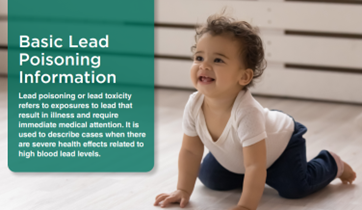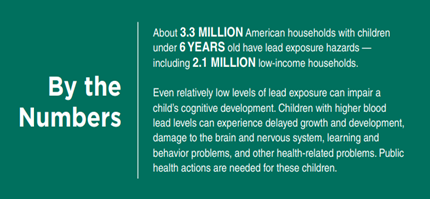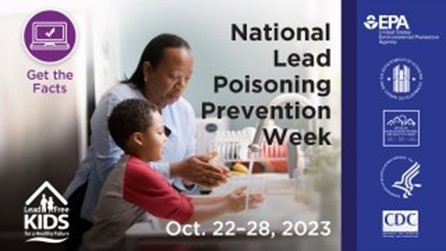It’s National Lead Poisoning Prevention Week
Each year, the U.S. Environmental Protection Agency (EPA) recognizes the fourth week of October as “National Lead Poisoning Prevention Week” so individuals, organizations, government agencies, and others can educate the public on ways to reduce childhood exposure to lead.

Get the Facts
NYCHA’s Environmental Health and Safety Department (EHS) would like to share the following facts from the EPA about lead exposure and its potentially harmful effects:
- Lead is toxic, especially in young children. When lead is breathed in or swallowed, it can result in damage to the brain and nervous system, learning and behavior problems, slow growth and development, or hearing and speech problems. According to the CDC, lead poisoning occurs when a person’s blood lead level is 3.5 micrograms per deciliter or higher.
- Lead poisoning is preventable! The key is preventing children from coming into contact with lead.
- Lead can be found inside and outside the home. Many homes built before 1978 have lead-based paint. Lead from paint, paint chips, and dust can pose serious health hazards, particularly to children and pregnant women.
- Other potential sources of lead include toys, painted furniture, metal or plastic jewelry, items made in other countries and imported into the United States (health remedies, foods, candies, cosmetics), lead-glazed pottery or porcelain, and collectibles that have been passed down.
- Along with young children, pregnant women are also at the highest risk of lead poisoning.
- The health risks caused by lead exposure in adults include:
- Miscarriages
- Premature births
- Low birth weights
- High blood pressure
- Digestive problems

Ways to Protect Your Family from Lead Exposure
Get Your Child Tested
- If you think your child has been exposed to lead, get your child tested.
- A simple blood test can detect lead. Consult with your healthcare provider or local clinic for advice on blood lead testing. If families do not have a healthcare provider or health insurance, they can call 311 to find a provider near them for low- or no-cost care. Families without a health care provider can also get an appointment to see a doctor and obtain a blood lead test through NYC Health + Hospitals by calling 347-507-3684.
- Act early. Children’s blood lead levels tend to increase from 6 to 12 months of age and tend to peak at 18 to 24 months of age.
- Blood tests are recommended for children living in a high-risk area or who have been exposed to lead.
TEMPO
In July 2021, NYCHA launched the Team for Enhanced Management Planning and Outreach (TEMPO), a program dedicated to outreach, inspection, and remediation in NYCHA apartments where there is confirmed or presumed lead-based paint, and where a child under the age of 6 lives or routinely spends more than 10 hours per week. Residents enrolled in TEMPO can request additional assessments during the year by calling the Customer Contact Center at 718-707-7771. For more information on TEMPO, click here.
To learn more about your apartment’s lead status, please visit https://selfserve.nycha.info/ or contact your property management office. For more information about lead, please visit the links below or call the NYC Health Department’s information line at 646-632-6023.
If you have questions about this or any environmental health and safety matter, please email ehs@nycha.nyc.gov. Residents, employees, and any member of the public can submit environmental health and safety concerns at https://on.nyc.gov/submit-concern.
For more information about lead, please visit:

